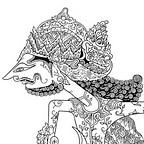St. Mark’s Church in-the-Bowery
A Photo-Essay on Faith & The Arts Primordially Entwined
Built during 1795–9, St. Mark’s Church in-the-Bowery is the second-oldest extant house of worship in Manhattan after St. Paul’s Chapel. Even before the property’s acquisition by The Episcopal Church in 1793, it hosted a family Chapel built in 1660 by New Amsterdam Director-General Peter Stuyvesant. This history makes the property the oldest site of continuous religious worship in New York City.
The unusual appellation in the Church’s name is a legacy of the property’s Dutch origins, as the Dutch word Bouwerij refers to the land Director-General Stuyvesant acquired for a farm, where the family Chapel was originally built. When Stuyvesant’s descendants sold the property to The Episcopal Church for $1, it was with the stipulation that the new parish serve the surrounding community (then-Bowery Village) and be theologically oriented as a low-church. Receiving the legal aid of Alexander Hamilton, St. Mark’s was incorporated as the first Episcopal parish independent of Trinity Church in New York City, with its fieldstone edifice designed in Georgian style by John McComb, Jr., who also designed New York City Hall.
The Church has had a longstanding relationship with the arts, which began at the turn of the 20th Century when demographic changes brought artists and writers to the Lower East Side. The Rev. William Guthrie (1868–1944), Rector during 1911–37, founded the St. Mark’s Arts Committee, which came to include prominent figures like Khalil Gibran (1883–1931) and firmly established the Church as a cultural center. Furthermore, Guthrie often included non-Christian guest speakers during services and advocated for the interpretation of religion through dance, making him a controversial figure in the wider Episcopalian polity.
Despite the controversies and early Diocesan rebukes, the relationship with the arts was sustained through the decades. The Church has hosted countless artists from dancers Martha Graham (1894–1991) and Ruth St. Denis (1879–1968) to the psychedelic band Mind Garage, whose nationally broadcast Electric Liturgy at St. Mark’s in 1969 was the first-ever documented Christian rock worship service. To further facilitate varied communal gatherings, pews were incrementally removed from the late-1960s onward with a total reconfiguration occurring after the devastating fire of 1978, which saw all pews permanently removed, the floor leveled, and hardwood installed.
In 1978, worker negligence ignited the three-alarm fire that consumed the top portion of the Church, with the roof and upper stained glass windows lost. With a commitment to rebuild, the Friends of St. Mark’s became the Citizens to Save St. Mark’s and later the St. Mark’s Historic Landmark Fund, with the Church completely restored and rededicated five years after the fire. Community relationships have been essential to the Church’s survival and it is presently home to several arts Partners-in-Residence: The Poetry Project, Danspace, New York Theater Ballet Workshop, and Loco-Motion Dance Theater.
The Church has seen a revival as a house of worship under recent Rectors, practicing a “radical Christian welcome” that emphasizes total inclusivity. Led by The Rev. Anne Sawyer since 2018, the parish is currently running the Restoring Beauty capital campaign to fund a three-phase endeavor of essential restorations to the Church edifice. Before being called to St. Mark’s, The Rev. Anne and her wife, The Rev. Susan Anderson-Smith, co-founded Imago Dei Middle School, a tuition-free Episcopal school for children of economically disadvantaged families in Tucson, Arizona.
The Church has been home to two foundational pillars of human civilization: faith and the arts. It is thus a sad irony that the materialistic pursuits of modern life have often forced institutions of faith and the arts to struggle and constantly defend their mere existence. The rootedness that the Church has given to parishioners and artists alike shows that it has wholly earned its centuries of survival and is fully deserving of centuries more.
These photos were taken on two nonconsecutive days utilizing both a wide-angle lens and a standard zoom lens. The Sanctuary’s ecclesiastical iteration was captured inside of five minutes due to a limited timeframe between complete assembly and regular preparations for Sunday service. Acknowledgments and heartfelt gratitude go to The Rev. Anne Sawyer for graciously approving the production of this photo-essay from initial email contact through to the review of its draft, to Historian Roger Jack Walters for also reviewing the draft to ensure accuracy and precision, to Sextons Jimmy Fragosa and Clive Morris for their kind attention and assistance, and to Musical Director Jeannine Otis for accommodatingly suspending practice.
To support the Restoring Beauty capital campaign, interested parties may donate at Sunday service or mail a check to the parish office.
St. Mark’s Church in-the-Bowery
131 E. 10th Street
New York, NY 10003
